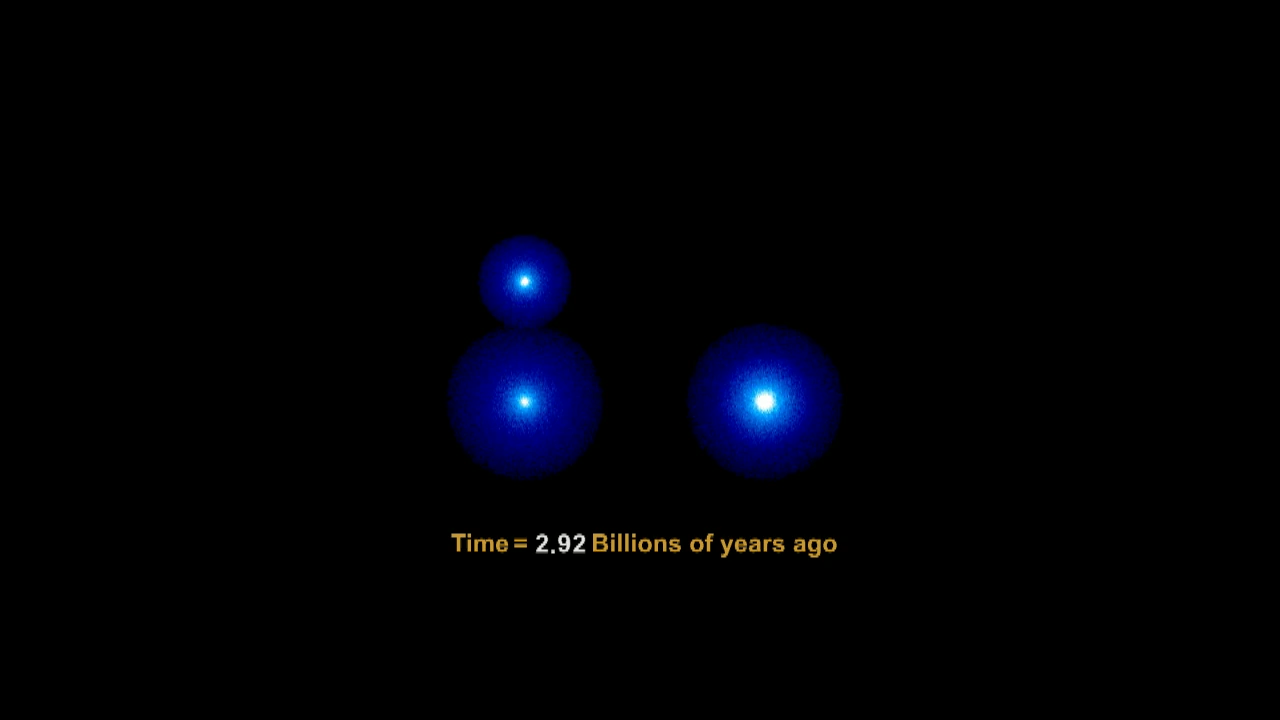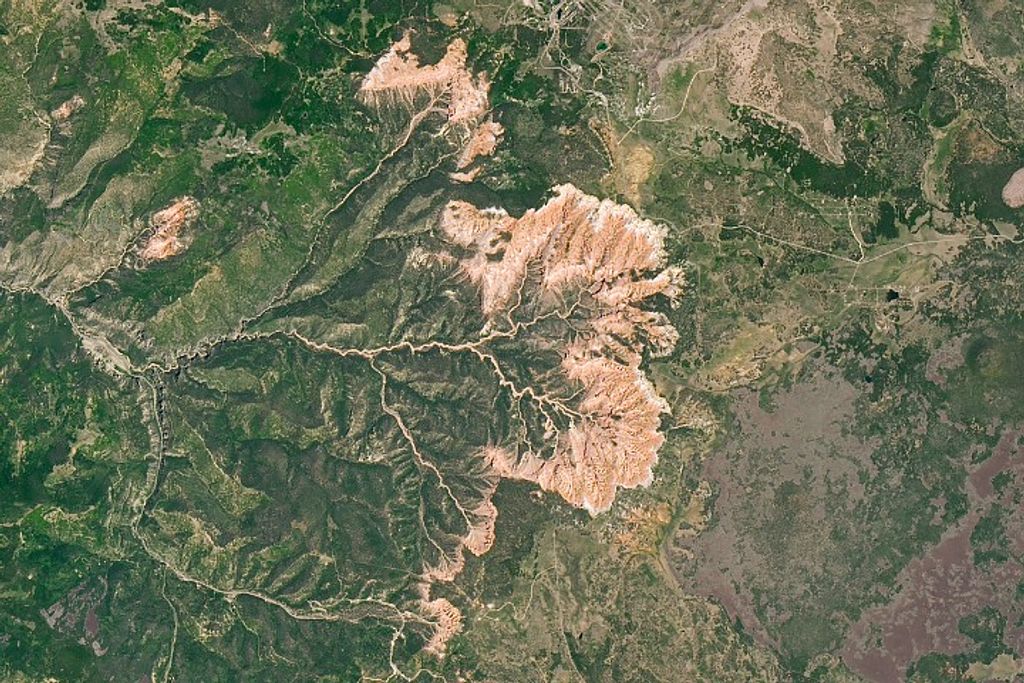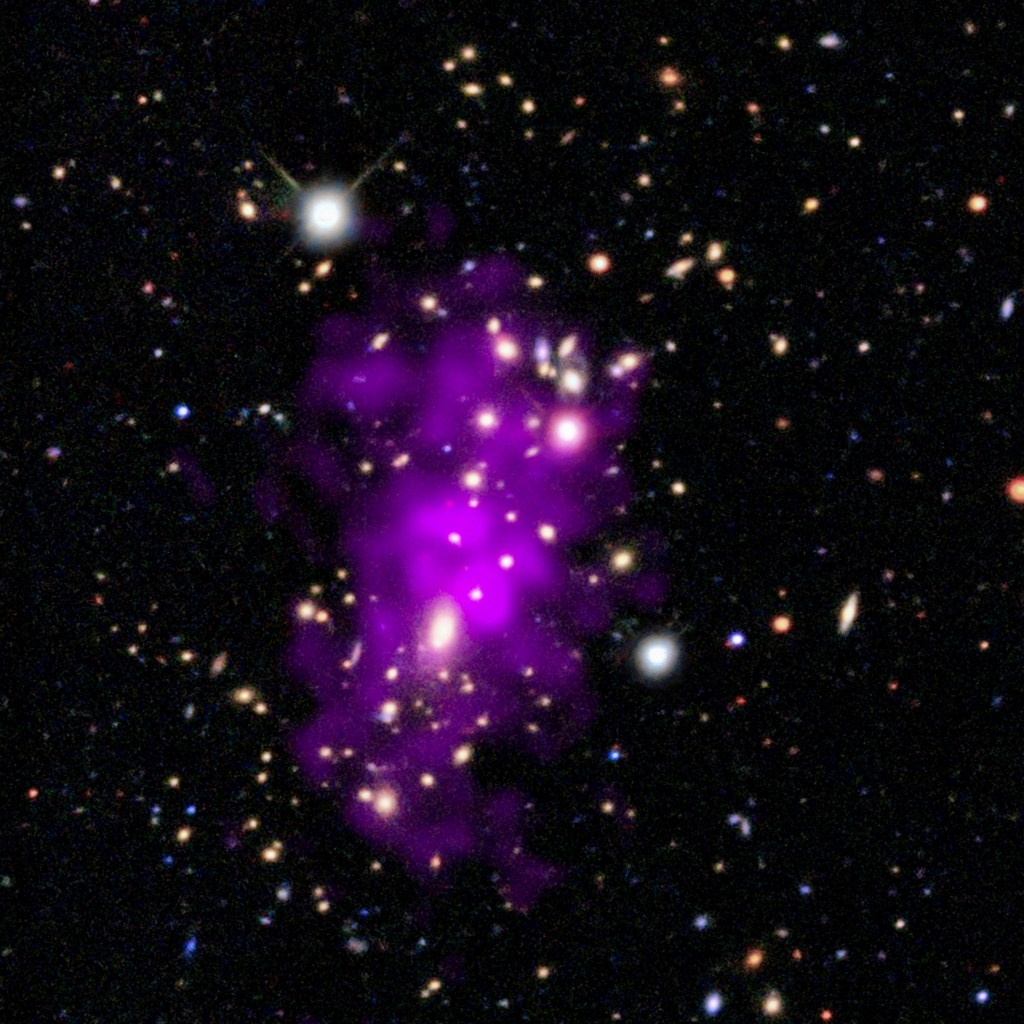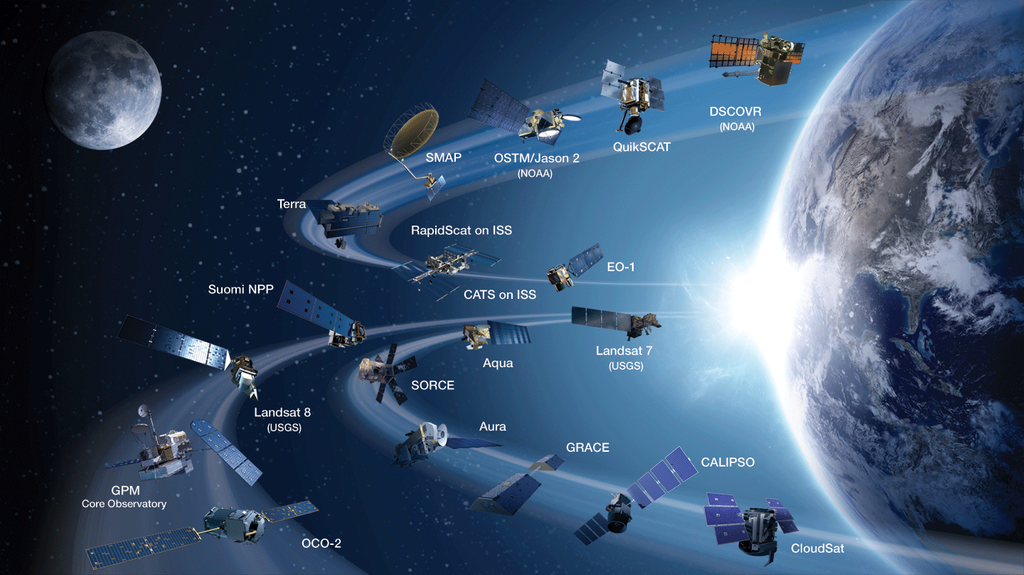1 min read
Searching for Dark Matter in a Galaxy Cluster

This rich galaxy cluster, catalogued as Cl 0024+17, is allowing astronomers to probe the distribution of dark matter in space. The blue streaks near the center of the image are the smeared images of very distant galaxies that are not part of the cluster. The distant galaxies appear distorted because their light is being bent and magnified by the powerful gravity of Cl 0024+17, an effect called gravitational lensing.
Dark matter cannot be seen because it does not shine or reflect light. Astronomers can only detect its influence by how its gravity affects light. By mapping the distorted light created by gravitational lensing, astronomers can trace how dark matter is distributed in the cluster. While mapping the dark matter, astronomers found a dark-matter ring near the cluster's center. The ring's discovery is among the strongest evidence that dark matter exists.
The Hubble observations were taken in November 2004 by the Advanced Camera for Surveys.
About the Object
- R.A. PositionR.A. PositionRight ascension – analogous to longitude – is one component of an object's position.00h 26m 34.99s
- Dec. PositionDec. PositionDeclination – analogous to latitude – is one component of an object's position.17° 9' 42.99"
- ConstellationConstellationOne of 88 recognized regions of the celestial sphere in which the object appears.Pisces
- DistanceDistanceThe physical distance from Earth to the astronomical object. Distances within our solar system are usually measured in Astronomical Units (AU). Distances between stars are usually measured in light-years. Interstellar distances can also be measured in parsecs.Approximately 5 billion light-years (1.5 billion parsecs); Redshift z = 0.395
- DimensionsDimensionsThe physical size of the object or the apparent angle it subtends on the sky.This image is roughy 3 arcminutes wide.
About the Data
- Data DescriptionData DescriptionProposal: A description of the observations, their scientific justification, and the links to the data available in the science archive.
Science Team: The astronomers who planned the observations and analyzed the data. "PI" refers to the Principal Investigator.The ACS data was from the HST proposal 10325: H. Ford (Johns Hopkins University), N. Benitez (Johns Hopkins University/Instituto de Astrofisica de Andalucia), T. Broadhurst (Tel Aviv University - Wise Observatory), R. White (STScI), K. Zekser (Johns Hopkins University), and D. Coe (Johns Hopkins University/Instituto de Astrofisica de Andalucia). The science team includes: M.J. Jee and H. Ford (Johns Hopkins University), G. Illingworth (UCO/Lick Observatory, University of California, Santa Cruz), R. White (STScI), T. Broadhurst (Tel Aviv University - Wise Observatory), D. Coe (Johns Hopkins University/Instituto de Astrofisica de Andalucia), G. Meurer and A. van der Wel (Johns Hopkins University), N. Benitez (Johns Hopkins University/Instituto de Astrofisica de Andalucia), J. Blakeslee (Washington State University), R. Bouwens (UCO/Lick Observatory, University of California, Santa Cruz), L. Bradley , R. Demarco, N. Homeier, A. Martel, and S. Mei (Johns Hopkins University). - InstrumentInstrumentThe science instrument used to produce the data.HST>ACS/WFC
- Exposure DatesExposure DatesThe date(s) that the telescope made its observations and the total exposure time.November 2004, Exposure Time: 14.5 hours
- FiltersFiltersThe camera filters that were used in the science observations.F435W (B), F475W (g), F555W (V), F625W (r), F775W (i), and F850LP (z)
- Object NameObject NameA name or catalog number that astronomers use to identify an astronomical object.CL0024+17,ZwCl 0024+1652
- Object DescriptionObject DescriptionThe type of astronomical object.Galaxy Cluster
- Release DateMay 15, 2007
- Science ReleaseHubble Finds Ring of Dark Matter
- Credit

This image is a composite of many separate exposures made by the ACS instrument on the Hubble Space Telescope. In total, six filters were used to sample light from broad and narrow wavelengths. The color results from assigning different hues (colors) to each monochromatic image. In this case, the assigned colors are: Blue: F435W (B) + F475W (g) Green: F555W (V) + F625W (r) Red: F775W (i) + F850LP (z)

Related Images & Videos

Hubble Finds Dark Matter Ring in Galaxy Cluster
This Hubble Space Telescope composite image shows a ghostly "ring" of dark matter in the galaxy cluster Cl 0024+17. The ring-like structure is evident in the blue map of the cluster's dark matter distribution. The map is superimposed on a Hubble image of the cluster. The ring is...

Simulation of Two Galaxy Clusters Colliding
Simulation of two galaxy clusters colliding. As the two clusters smash together, the dark matter falls to the center of the combined cluster and then back out. The dark matter moves outward, it begins to slow down under the pull of gravity and piles up, forming a "ring" of...
Share
Details
Claire Andreoli
NASA’s Goddard Space Flight Center
Greenbelt, Maryland
claire.andreoli@nasa.gov
































